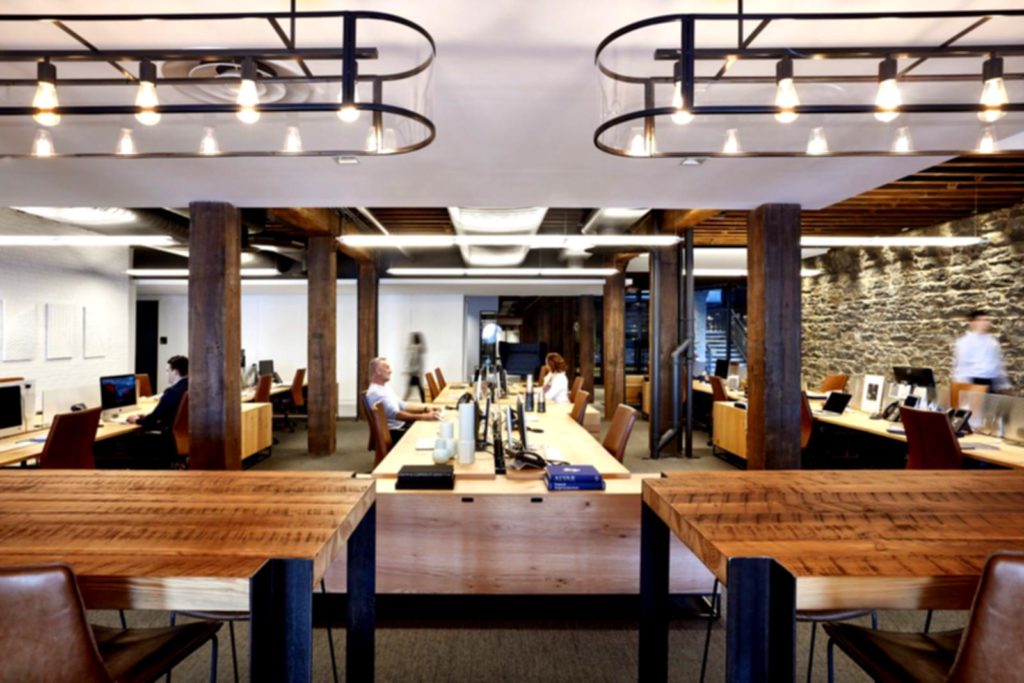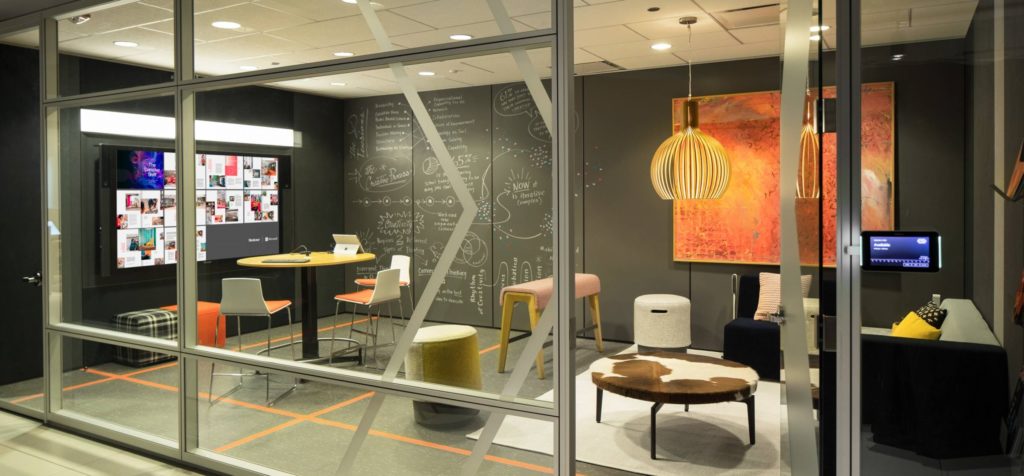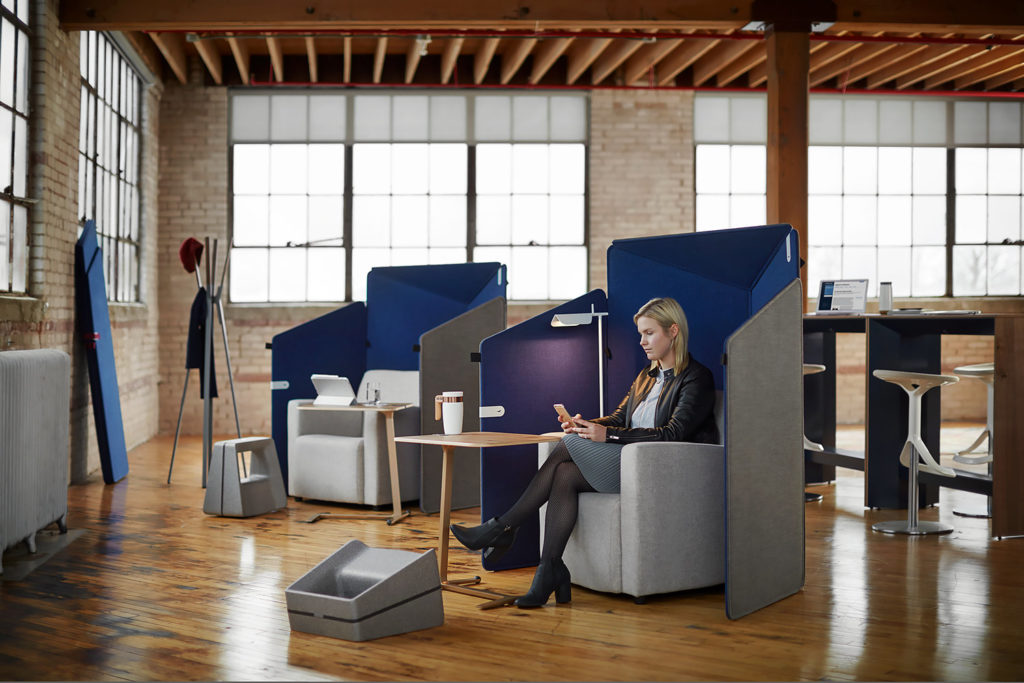Everyone involved, even remotely, in the world of the workplace can see that the pendulum has swung through the office. It has swept through, taking panel systems with it. In many places we are left with rows of workstations or benches. Employees are frequently elbow-to-elbow and nose-to-nose.
Read the comment sections on any article that discusses this trend and you would think that employees are ready to jump out the window to escape the sinister, dark intentions of their employers. “How can you value me so little?” “They are just trying to save money by cramming me into this awful environment.” “As soon as I find another job, I am out of here!”

No doubt, there have been some terrible mistakes made in the name of improving the workplace. But there are some great successes as well.
Workplace design is a complex process. Workplace acoustics is one aspect of the process that is frequently overlooked and regularly a major reason for disappointment.
The problems
Employee distraction has been surveyed by dozens of organizations. The results are consistent and startling. Roughly 70 percent of all employees in open work areas report that the biggest impact on their productivity is the conversations of their coworkers.
When an employee takes a phone call within earshot of another, the content of the conversation is enticing to the brain of the neighbor. Once distracted, productivity drops. Studies have shown that it can take as much as 20 minutes to fully regain concentration on complex tasks once distracted. Once distracted, error rates increase as work is resumed.
Living a cliché, I am writing this on a Sunday morning at a Starbucks in Washington, D.C. A chatty couple just sat down next to me. The first several paragraphs of this piece flowed from my brain in minutes. Then poof. I am re-grouping.

The solutions
As we plan for new workplaces and for modifications to existing workplaces, there are a few simple acoustical concepts that can help ensure a better outcome for the employee’s satisfaction and the success of the enterprise.
1. Acoustically absorptive materials
Offices full of people create noise. Conversations, ringing phones, and keyboard clicks are a constant. This is all energy. The energy of this sound radiates away from its source and interacts with every surface. Concrete, glass, and painted sheetrock reflect the sound. Multiple reflections take place within fractions of a second. This sound creates a web of distracting noise. Further, as humans, we hear this noise and react by increasing the level of our voice to compete with the distraction. This causes a “ratcheting-up” of the noise levels. Before long, instead of a productive work environment that encourages productive pursuit of the business enterprise, we have employees isolating themselves with headphones and fingers in their ears to find relief.
Adding acoustically absorptive materials improves this condition. Absorptive materials take many forms. Acoustical ceilings, acoustical wall panels and carpet are a few we all know. Acoustical ceilings seem to have become an unattractive alternative to many. The look of the exposed building lends a feel that is more in line with the brand of many occupiers. When ceilings and carpet are not a part of the design, it is the responsibility of the workplace design team to strategically add absorptive materials in other places.

With Europe in the lead, there has been an explosion of interesting acoustical materials developed in the last several years. These materials are not only an effective way to reduce reflective noise but to provide interesting looks that can augment the look of the space.
By placing acoustical materials in areas of the noise creation, the levels of noise can be reduced to the benefit of the productive workers living in the space. As a general principle, placing the absorptive materials as close as possible to the noise source is most effective. Once the noise is free within the space, it harder to control. Highly absorptive desk dividers placed in front of the person talking is very effective. A hanging cloud of material above a talkative group is good as is placement on nearby walls.
When choosing the materials, make sure that they have a high Noise Reduction Coefficient (NRC). The NRC rating indicates the ability of a material to absorb sound. The rating indicates the percentage of sound energy that strikes the surface and does not bounce back. A rating of .50 (50 percent) is typical of an average acoustical ceiling tile. A rating of 1 (100 percent) is available in a few of the best acoustical products.
I was in the space of a startup company recently that suffered from too many hard surfaces and a lack of absorptive materials. When conversations broke out, the noise levels in the space spiked. People leaned in to understand each other. It was a fun environment, in many ways, with great daylight and color. But the noise levels were oppressive. Adding acoustical material to the space would not lessen the fun or the bright feel. However, it would improve the communication in the space and allow the employees to better interact.
2. Sound masking systems
The next key acoustical concept for consideration is reducing the radius of distracting conversations. The radius of distraction is simply the distance from a talker to the distracted party. In a benching environment, we don’t expect adjacent people to have any acoustical separation. They are likely adjacent to each other to collaborate and share information. But their collaboration and sharing should not impact other collaborative groups.
Most modern commercial office buildings have very quiet background sound levels. With no one else in the room, the space is dead quiet. A whisper can be overheard at significant distant. Opening a bag of chips is a distraction at 50 feet! I call this “creepy quiet”. When conversations begin in a creepy quiet environment, they can be easily overheard at distances of 50-60 feet. This does not allow for productive work.

Sound masking systems provide relief to creepy quiet environments. By adding a soft background sound to the space, the radius of distraction is significantly reduced. In many cases, the distractions can be significantly reduced down to about 15 feet. Sound masking system come in many varieties. The key to a successful sound masking installation is the uniformity of the sound delivery, the spectrum of the sound and the volume of the sound.
Uniform sound delivery requires that the speakers not be facing towards the occupants of the space. As employees circulate through the space, they should not be able to discern the location of the speakers. A consistent sound delivery allows our human brains to filter it and push it out of our consciousness.
The spectrum of the sound is the composition of the sound energy by frequencies. As humans, we hear from low frequencies, like a sub-woofer, to high frequencies, like a small bell. The frequencies that we use for speech are in the middle of our range of hearing. A good sound masking spectrum concentrates sound within these middle frequencies. Rumbling lows and hissy high frequencies are not needed. The result is a smooth sound that should resemble gently moving air or water. An analysis of sound will find that the sounds of ocean surf or a rushing stream are very effective sound masking spectra.
The volume of the sound masking is important for employee acceptance. If the sound level is too low, it will not be effective. If too loud, it will not be accepted. Successfully achieving this balance will determine the success of the system.
Good workplace acoustics are attainable!
Productivity is nearly impossible to measure in today’s knowledge-based economy. But imagine if a magic pill could be taken to improve employee productivity just 5 percent. Good workplace acoustics are that magic pill.
A well-designed acoustical workplace will feel comfortable to employees. Collaboration will be aided and will not distract surrounding groups that are not involved in the discussion. Competing conversations will not cause the ratcheting-up process making the stress levels of the occupants rise.
AUTHOR: Steve Johnson
(https://workdesign.com/2016/11/acoustics-open-office/)




